Reviews and reports. Рубрика в журнале - Arctic and North
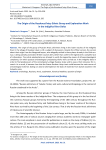
The Origin of the Russkoust'intsy Ethnic Group and Exploration Work in the Indigirka River Delta
Статья научная
The origin of the group of Russian Arctic old-timers living in the lower reaches of the Indigirka River in the village of Russkoe Ustye is still a subject of discussions. Despite the official version, the version about their origin from the Novgorod boyars, who allegedly settled in those places already in the 16th century, is being actively promoted. Written sources deny rather than confirm the legend with a complete lack of information. The article substantiates an attempt to verify the legend by means of ethnoarchaeological complexes, for which purpose archaeological prospecting works were carried out in the Indigirka delta in order to find predecessors of the contemporary village Russkoe Ustye and to assess their relevance for research. As a result, it became clear that the Staroe Russkoe Ustye tract could become the main source of archaeological material. Dating can also be attempted on the basis of materials from burials located in the Gulyanka area.
Бесплатно
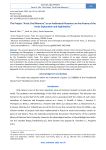
Статья научная
The research group of the Arctic Museum and Exhibition Center, Peter the Great Museum of Anthropology and Ethnography, in cooperation with the Marine Heritage Association and the media group of the Marine Technical College in St. Petersburg are implementing the Arctic Oral Memory project, supported by the Presidential Grants Fund. The project involves the creation of an open Internet resource https://arcticmemory.ru/ with video recordings of oral histories of famous Russian polar explorers. The article is devoted to the results and experience of the implementation of this project, which is at the intersection of journalism (popularization), cultural anthropology and history, providing the opportunity to see and hear first-hand information from those who personally participated in the study and development Arctic.
Бесплатно
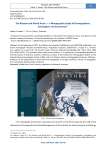
The Russian and World Arctic — a Monographic Study of Demographers, Sociologists and Economists
Статья научная
At the beginning of 2022, the Political Encyclopedia Publishing House (ROSSPEN) published a collective monograph “Russian and World Arctic: Population, Economy, Settlement” / Fauzer V.V., Smirnov A.V., Lytkina T.S., Fauzer G.N.; ed. by prof. Fauzer, Moscow, Political Encyclopedia Publ., 2022, 215 p. ISBN 978-5-8243-2479-2. The reviewers were well-known scientists: S. V. Ryazantsev, Corresponding Member of the RAS, Doctor of Economic Sciences, Professor, Director of the Institute for Demographic Studies of the Federal Research Sociological Centre of RAS, and A. N. Pilyasov, Doctor of Geographical Sciences, Professor, Professor of the Department of Socio-Economic Geography of Foreign Countries, Faculty of Geography, M.V. Lomonosov Moscow State University.
Бесплатно
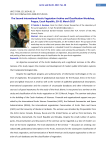
Статья научная
Here we present a brief overview of events and presentations at the International Arctic Vegetation Archive and Classification Workshop, held in Prague, the capital of the Czech Republic, on 30–31 March 2017. The purpose of the workshop was to collect and process data about the Arctic vegetation. The data supposed to be presented in a standard format for subsequent classification and analysis. Twenty-nine scientists from most of the Arctic states were among the participants of the workshop. They presented an overview of existing databases on vegetation, discussed the possibility of sharing and pooling of data as well as possible ways of classification for the pan-Arctic vegetation.
Бесплатно
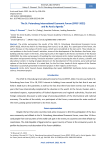
The St. Petersburg International Economic Forum (SPIEF-2022) and Its Arctic Agenda
Статья научная
The article summarizes the results of the 25th St. Petersburg International Economic Forum (SPIEF-2022), which was held in St. Petersburg from June 15 to 18, 2022. As a participant of the forum, the author focuses on the analysis of Arctic issues, which were considered at the last event. They include current problems in the Arctic Council's activities, issues of the development of the Northern Sea Route, shipbuilding and ship repair in the Arctic, ensuring security in the region by the forces and means of the Russian EMERCOM, the state and prospects of building the international Arctic station Snezhinka, and problems of education and personnel training. Particular attention is paid to increasing the role of science, scientific and educational centers in making strategic decisions on the development of the economy, social and spiritual spheres of the Arctic territories. It is noted that, for the first time, heads of Arctic regions of the Russian Federation successfully presented investment projects in their regions at the Forum.
Бесплатно
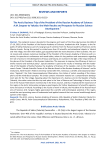
Статья научная
The analytical review is devoted to the progress and results of the three-day business trip (March 17–19, 2021) of the President of the Russian Academy of Sciences, Academician A.M. Sergeev, to the Republic of Sakha (Yakutia) as part of a large group of scientists from the Russian Academy of Sciences and its Siberian branch. During this period, he visited more than 20 scientific and educational objects in Yakutsk and Tiksi village, met with their leaders, got acquainted with the main directions of their activities. The article reveals and analyzes numerous meetings of the President of the Russian Academy of Sciences with scientists, his speeches at conferences and round tables, where his key positions and assessments regarding the role of science in the development of Russia and Yakutia are outlined in the light of the requirements of the decree of the President of the Russian Federation “On measures to improve the efficiency of state scientific research and technical policy”. Special attention is paid to the results of meetings with the leadership of the Republic of Sakha (Yakutia), the Academy of Sciences of the republic, visits to the Federal Research Center “Yakutsk Scientific Center of the Siberian Branch of the Russian Academy of Sciences" and its institutions, North-Eastern Federal University named after M.K. Ammosov, scientific and educational laboratory "Agrokub", the Polar Geocosmophysical Observatory, the station of rocket sounding of the atmosphere and the wind-diesel complex. The article contains innovative material on a comprehensive development plan for the Tiksi village. Speaking about the importance of a business visit to the Republic of Sakha (Yakutia), the author notes that this trip took place in the Year of Science and Technology in Russia, on the eve of the Russian Federation's chairmanship in the Arctic Council, and thus emphasized the importance of the region in the Arctic state policy and gave a good impetus for further development of scientific organizations and science in Yakutia. According to the results of work in Yakutia, the President of the Russian Academy of Sciences A.M. Sergeev highly appreciated the scientific and technological potential of the region, noted the most promising areas of fundamental and applied research that can ensure breakthrough development of the region.
Бесплатно
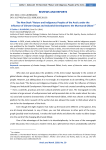
Статья научная
In 2020, a book, edited by E.A. Borovichov and N.V. Vronsky, “Nature and the indigenous population of the Arctic under the influence of climate change and industrial development: the Murmansk Oblast” was published by the Graphite Publishing House. The book provides a comprehensive assessment of the effects of modern climate dynamics and human impact on biota, the environment and nature management in the Murmansk Oblast, one of the most industrially developed regions of the Russian Arctic, with particular attention to changes in the life of the indigenous people of the area - the Sami. The approaches to the development of a regional climate change adaptation strategy based on scenarios of the development of the Murmansk Oblast and considering the traditional knowledge of the indigenous population, as well as the socio-cultural development strategy of Lovozero, the compact residence area for the Kola Sami, are presented.
Бесплатно

The problems of the Arctic region in modern international journalism: examples and features
Статья научная
The article is devoted to the review of problems of the Arctic region presented in modern international journalism on the example of the travel essay by the international journalist S. Pashkevich “Letters from the Edge of the World. Traveling to Russian America” and the TV program “30 days in the Arctic with Ville Haapasalo”. These works are selected as examples of international journalists covering the problems of the Arctic region in different formats (print and tv) and the longterm perspective. As a result of the analysis, we can conclude on the general topic of chosen journalism works — the way of life of residents. The choice of problems is determined by the genre features of the texts presented: if Pashkevich's letters are more of a lyrical journalism work whose purpose is to show the life of “Russian” Alaskans with an emphasis on general Russian-American history; Ville Haapasalo's TV program combines entertainment and information components, and to a certain extent entertaining component (stories about hunting, fishing, participation of the facilitator in these classes) is balanced by the presentation of various problems from which residents of the Arctic region of Russia.
Бесплатно
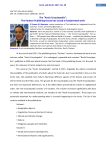
The “Arctic Encyclopedia”: The Paulsen Publishing House has issued a fundamental work
Статья научная
Here we present a review of a two volume scientific work published in April 2017 by the Paulsen Publishing House — the “Arctic Encyclopedia”. The authors — 100 people from different fields of science — enabled the publisher to get a detailed coverage of geography, flora and fauna, climate, indigenous peoples of the Arctic, as well as international cooperation, social, economic and cultural development of the Arctic areas. This work is a fundamental one and deserves close attention from every person interested in the Arctic issues.
Бесплатно
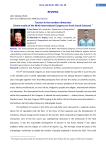
Статья научная
The article presents the summary of the Ninth International Congress of Arctic Social Sciences. The authors focus on the key issues of tourism development in the Arctic and Subarctic regions, such as sustainability, involvement of local people and climate change. The conference reveals how research in the field of tourism is based on multidisciplinary approaches combining economics, sociology, history and meteorology. Another part of this review is dedicated to the definitions and nature of ecotourism, its development and history in the national parks of Finland and the Republic of Karelia. National parks Koli and Paanajärvi were taken as case studies of ecotourism development.
Бесплатно
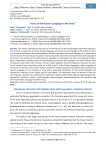
Traces of the Russian Language in the Arctic
Статья научная
This article is devoted to the Arctic as the territory of an ancient developed civilization existence; the territory that gave the world the Russian language, which later spread throughout the world; the territory where archaeological and anthropological artifacts have been preserved, allowing us to speak about the primacy of the Aryan (Russian) people, and, consequently, about the primacy of the ancient language of the Aryans. The authors of the article give the examples of excavations, the names of toponyms, hydronyms, ornaments on clothes, vessels, household items, proving the life of people in the Russian North many thousands of years before the Sumerian, Persian, Indian, Egyptian, Chinese civilizations; represent the opinion of scientists from around the world; try to find “traces” of the Russian language in other languages of the world. The authors of the article made a comparative analysis and demonstrated the interconnection of several languages on the example of some words, presented information on the Russian alphabet and showed its connection to the English signs of transcription. The hypothesis about the primacy of the Russian language is based on the statements of well-known domestic and foreign linguists, dialectologists, ethnographers, historians, slavists, sanskritologists, paleontologists, paleoclimatologists, soil scientists, and other researchers and requires further study.
Бесплатно
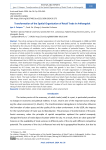
Transformation of the Spatial Organization of Retail Trade in Arkhangelsk
Статья научная
The article compares the spatial organization of retail food trade in Arkhangelsk in 1988 and 2022 in order to identify the changes that have occurred in the post-Soviet period. Its transformation was facilitated by the closure of industrial enterprises, most of them were located in settlements in outskirts, a change in the solvency of residents, and a reduction in the number of potential buyers. The internal heterogenety of the conditions for the development of trade in different parts of the city, differences in the provision of retail outlets for residents, the prevailing trade formats that are typical for central and outlying areas are revealed. Compliance of the principle of equidistance of shops from residential buildings was checked. We also conducted a content analysis of customer reviews about various formats of retail outlets. We determined that in 2022 the number of stores in Arkhangelsk increased by 3 times compared to 1988. However, their distribution throughout the city is extremely heterogeneous. There is a clear competitive advantage of the central districts of the city (Oktyabrskiy, Lomonosovskiy), where the number of stores has increased by 4–5 times, over the outskirts, where the growth is less than 2 times (Maimaksanskiy, Isakogorskiy, Tsiglomenskiy districts). The most common form of trade organization in Arkhangelsk is a discount store, which is associated with the low solvency of the city population. Most of them belong to federal retailers. Their expansion in Arkhangelsk mainly affected the central districts and bedroom suburbs close to them. The least number of stores of federal and local retail chains has been opened in the outlying districts; there aren't any shops on the islands without bridges (Brevennik, Linskiy Priluk, Khabarka, Kegostrov). For outlying areas, the most common stores are those that do not belong to chain retailers, these are small pavilions and kiosks. Most customers’ reviews of such stores are negative and the overall rating of their work is lower than that of chain stores.
Бесплатно
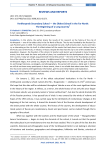
Verkhoyansk secondary school - the oldest school in the far north: the beginning of a long journey
Статья научная
In this article, the author shares the results of his research on the history of the city of Verkhoyansk - one of the oldest cities in the Far North of Russia. The city was founded by the Russian Cossack Postnik Ivanov in 1638. The school, which was opened two and a half centuries later, has its own history, as interesting as the city itself: it reflects almost all the events that took place in such a distant time in the Arctic coast of the Arctic, in Yakutia, in Russia. Despite the fact that the city is one of the smallest for its population, however, the founders of the school, its teachers and alumni were involved in many historical events, facts that made the fame and pride of place, has contributed to the development of their region, their country. Today we will get acquainted with the earliest period - the time of the Foundation and creation of the school as one of the main points of enlightenment of the vast territory lying to the North of the Verkhoyansk ridges. As it turned out, despite the long-standing interest in this place on the part of domestic and foreign historians, sociologists, and ethnographers, this period still remains a blank spot in history: we still do not know many participants in these events, there is no reliable data about some facts. The author has to be content with fragmentary information, give his own interpretation and explanation.
Бесплатно
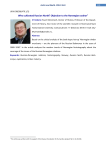
Who cultivated Russian North? Objection to the Norwegian author
Статья научная
Based on the critical analysis of the book Ingve Astrup ‛Norwegian timber merchants – are the pioneers of the Russian Belomorye in the years of 1880−1930’. In the article analyzes the modern trends of Norwegian historiography about the coverage of the issues of the Russian-Norwegian relations.
Бесплатно
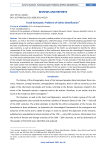
Yurak-Samoyeds: Problems of Ethnic Identification
Статья научная
The article is devoted to the poorly studied problem of the origin of the name Yuraki, which the Russians, as well as the Enets and Nganasans, called the group of the Samoed-speaking population that wandered along the northern outskirts of Western Siberia in the 17th — first half of the 20th century. On the basis of published and unpublished archival materials, information from the works of Russian and foreign scientists, as well as dictionaries of the peoples of the North, we attempted to identify the ethnic composition of the Yuraks, the boundaries of their settlement, determine the chronological framework for the emergence and existence of this name and clarify its origin. The research has resulted in a number of reasonable conclusions and assumptions. The name Yuraki appeared in the 17th century, when the tax policy of the tsarist administration in the north of Western Siberia provoked active resistance of certain groups of the nomadic Samoyed population. Russians called the Yoraks / Yuraks nomadic in the deep tundra, who did not pay a permanent tax, tundra and forest Nenets and Enets, as well as a mixed Nenets-Enets group. This name comes from the Nenets word Yor meaning "depth". By the 19th century, the Nenets of the Yenisei province began to be called Yuraks, regardless of the tax system. In the Soviet household documents of the Dolgan-Nenets National District, this name appeared until the middle of the 20th century.
Бесплатно
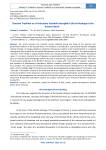
Zemstvo Tradition as a Particularly Valuable Intangible Cultural Heritage of the Russian North
Статья научная
The article presents the scientific results obtained during the study of the zemstvo self-government tradition in the Russian North. This tradition is considered as a particularly valuable intangible cultural heritage. Its image-symbolical vocabulary (thesaurus) could be used in development of a regional strategy and local projects for the spatial development of the northern macroregion. The idea-concept of “zemstvo” (“mir”) holds a unique position within the conceptual sphere of the Russian North’ geocultural space. It is an ideal, canonical form of religious and sociocultural land management of Pomorye, which appears as reserved island-archipelago covered by web of autonomous, autocratical communities. The natural and cultural landscape of the Northern Russian mir is replete with “conciliar” and “sophian” semantics and symbolics of development, specialness, selfness, freedom, unitotality, triality, rhythmicity, gracefulness, wisdom. The cultural and semiotic mechanisms of the Slavic-Russian development of the lands and waters of the midnight Edge of the World are studied. Sacred geography and geosophy of “verhovskiy” and “nizovskiy” colonization streams of the North and the Arctic regions are revealed. Special attention is paid to the presentation of the experience and practices of preserving and adapting the sacred heritage associated with land management and consecration of territories and water areas of Pomorye (Kenozerskiy National Park, Naryan-Mar and Mezen Diocese, the project “Common Cause. Revival of Wooden Temples of the North”).
Бесплатно
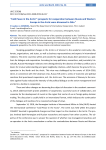
Статья научная
The article represents a brief overview of the speeches presented at the “Cold Peace in the Arctic” International Conference (Oslo, Norway, September 2018) attended by experts from Russia, Norway, and other countries. The author believes that many representatives of the scientific community see prospects for mitigating contradictions and strengthening international cooperation in the Arctic.
Бесплатно
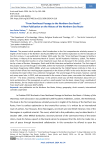
Статья научная
The present article provides a brief introduction to the first comprehensive scholarly account in English of the history of the Northern Sea Route (NSR) from the earliest exploration to the first decades of the 21st century. It was published in October 2022 under the title “From Northeast Passage to Northern Sea Route. A History of the waterway North of Eurasia” by Brill Academic Publishers, Leiden, The Netherlands. This introduction touches on a few important issues that are discussed in the volume, which is written by a team of Russian, Norwegian, Dutch and British historians and political scientists. The first stage of this project was carried through in the 1990s, within the framework of INSROP (The International Northern Sea Route Programme (1993–1999)), which was conducted by the Fridtjof Nansen Institute in Oslo. As a result of their efforts four working papers appeared on the history of NSR. In the end a decision was made to develop the topic further into a collective monograph. This second stage of the project, however, started only many years later, in 2015, and was executed in the course of seven years, now under the leadership of the UiT - The Arctic University of Norway. In the present article you will find information about the contents and direction of the monograph, as well as a small sample from the book, chosen from a multitude of other themes, for the simple reason that it is relevant to the recent commemoration of 150th anniversary of Franz Josef Land’s discovery (1873–2023).
Бесплатно
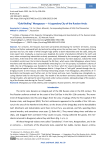
“Gold-Boiling” Mangazeya — A Legendary City of the Russian Arctic
Статья научная
For centuries, the Russians have been persistently developing the northern territories, moving further and further eastwards both by land and by sailing across the northern seas. The main goal of these journeys was furs, the trade of which brought huge profits to both industrialists and the state, being the main export item. Gradually, as reserves were depleted, the center of production shifted to the north and east, where enterprising industrialists actively penetrated, followed by the sovereign’s people, who taxed local tribes. At the end of the 16th century, the state, represented by Tsar Boris Godunov, realized the need to establish control over the territories beyond the Ob River, which were called Mangazeya, where Pomor merchants and industrialists were uncontrollably extracting furs. For this purpose, by Godunov’s decree of 1600, the city of Mangazeya was founded on the Taz River, which for several decades became the main stronghold and capital of the vast Mangazeya district. A huge flow of “soft gold” passed through the city, bringing income to the treasury and enriching enterprising people. From Mangazeya, detachments of industrialists and Cossacks went further east, to the Yenisei and Lena rivers, founding new strongholds, securing Siberian lands for the Russian state. The wealth of the northern territories attracted the interest of foreign invaders, who planned to seize these lands under various pretexts, taking advantage of the weakening of the Russian state during the Time of Troubles.
Бесплатно


